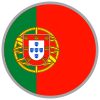In medieval Leiria there is a commercial and cultural friendliness between Muslims, Christians and Jews. They all share the medieval town outside the walls. Traces of the Jewish presence in Leiria are quite old. The first written documents date back to the beginning of the 13th century and there is no reason to doubt an earlier presence, even though there aren’t any documents to confirm this. The Jewish quarter becomes a prominent centre of culture, not only for pioneering the printing press but also for the presence of a very diverse set of urban professions of great social and economic interest, with special emphasis in financial and medical activities. The Church of St. Martin, built on the floodplain in the 1200s and early 1300s, was connected to the Hospital or “Albergaria de Todos os Santos” and disappeared to give way to post-Renaissance modernity. It was one of the town’s first churches, after the Church of Santa Maria da Pena, next to the last stronghold, and the Church of St. Peter, in the high walls, and most certainly marked the profile of Leiria in the Middle Ages.





